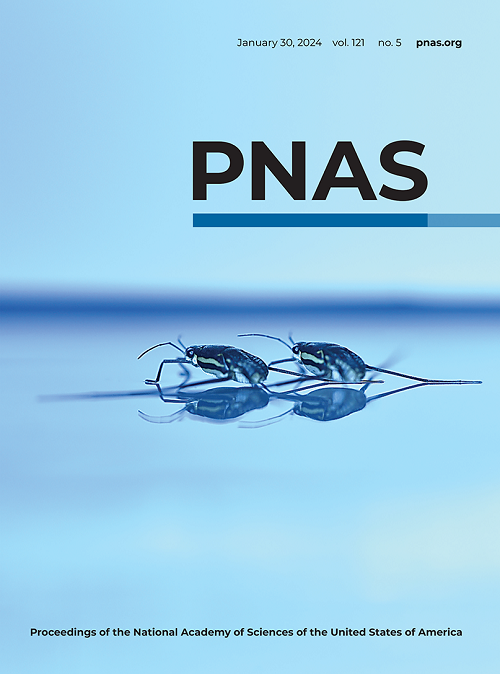Planar device–enabled speckle illumination for dark-field label-free imaging beyond the diffraction limit
IF 9.4
1区 综合性期刊
Q1 MULTIDISCIPLINARY SCIENCES
Proceedings of the National Academy of Sciences of the United States of America
Pub Date : 2025-02-20
DOI:10.1073/pnas.2423223122
引用次数: 0
Abstract
Dark-field microscopy is a technique used in optical microscopy to increase the contrast in unstained samples, making it possible to observe details that would otherwise be difficult to see under bright-field microscopy; thus, it has been widely employed in biological research, material science, and medical diagnostics. However, most dark-field microscopy methods cannot overcome the optical diffraction limit and require a bulky dark-field condenser and precise alignment of each optical element. In this study, we introduce a planar photonic device that can produce random speckles for dark-field illumination and improve the optical resolution. This planar device is made of random distribution fibers for injection of a laser beam, a scattering layer to produce random speckles, a one-dimensional photonic crystal (1DPC) to produce a hollow cone of light, and a metallic film to increase the energy efficiency. This planar device can work as a substrate for conventional microscopy. Taking advantage of the hollow cone of light with random speckles generated by the proposed planar device, we achieve a high-contrast, label-free image with a 1.55-fold improvement in spatial resolution. Furthermore, random evanescent speckles can be generated on the 1DPC just through tuning the incident wavelength, which demonstrates the ability for optical surface imaging beyond the diffraction limit. The advantage of this technique is that it does not require complex optical system or precise knowledge of the illumination pattern. This study will expand the potential applications of dark-field microscopy and provide insights into samples that might otherwise be invisible under traditional dark-field microscopy.求助全文
约1分钟内获得全文
求助全文
来源期刊
CiteScore
19.00
自引率
0.90%
发文量
3575
审稿时长
2.5 months
期刊介绍:
The Proceedings of the National Academy of Sciences (PNAS), a peer-reviewed journal of the National Academy of Sciences (NAS), serves as an authoritative source for high-impact, original research across the biological, physical, and social sciences. With a global scope, the journal welcomes submissions from researchers worldwide, making it an inclusive platform for advancing scientific knowledge.

 求助内容:
求助内容: 应助结果提醒方式:
应助结果提醒方式:


